Hey there! You appeared to have stumbled upon my little blog, are you lost? “Shoot for the moon. Even if you miss, you'll land among the stars.”
Don't wanna be here? Send us removal request.
Text
My home...
Pray for the Florida Keys…(and all of Florida)
Hey everyone…
I’m not sure if the news has been broadcasting Hurricane Irma, but that storm plans to plow right up Florida.
My home is in the Florida Keys (also known as the Straights of Florida). We are a tiny collection of islands at the bottom of Florida…
The last hurricane here, Wilma, flooded out the Gulf side of the Keys. Thousands of families lost their homes, vehicles, businesses and much more…
A storm like Irma could devastate us.
So I ask–please pray for Florida. If you don’t pray, then send calming vibes or whatever form …

46 notes
·
View notes
Text
This Week @ NASA--April 14, 2017
Cassini and the Hubble Space Telescope, two of our long-running missions, are providing new details about the ocean-bearing moons of Jupiter and Saturn. Hubble’s monitoring of plume activity on Europa and Cassini’s long-term investigation of Enceladus are laying the groundwork for our Europa Clipper mission, slated for launch in the 2020s. Also, Shane Kimbrough returns home after 171 days aboard the Space Station, celebrating the first Space Shuttle mission and more!

Ocean Worlds
Our two long-running missions, Cassini and the Hubble Space Telescope, are providing new details about “ocean worlds,” specifically the moons of Jupiter and Saturn.
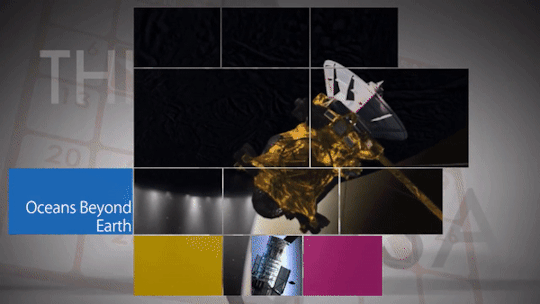
The details – discussed during our April 13 science briefing – included the announcement by the Cassini mission team that a key ingredient for life has been found in the ocean on Saturn’s moon Enceladus.

Meanwhile, in 2016 Hubble spotted a likely plume erupting from Jupiter’s moon Europa at the same location as one in 2014, reenforcing the notion of liquid water erupting from the moon.
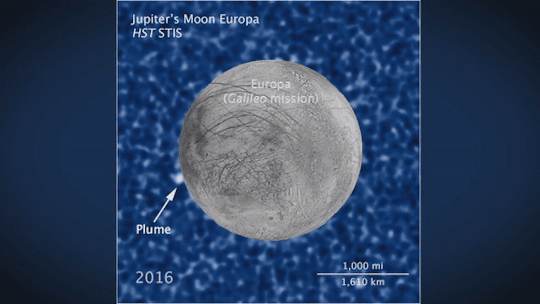
These observations are laying the groundwork for our Europa Clipper mission, planned for launch in the 2020s.
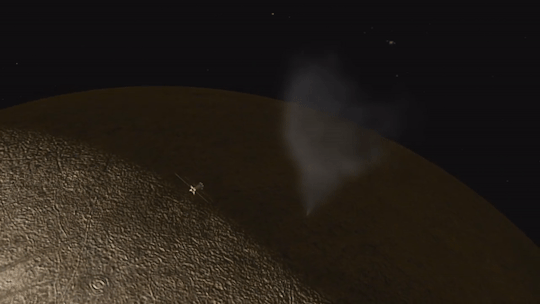
Welcome Home, Shane!
Shane Kimbrough and his Russian colleagues returned home safely after spending 173 days in space during his mission to the International Space Station.
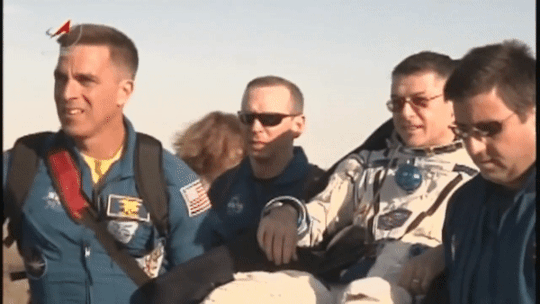
Meet the Next Crew to Launch to the Station
Meanwhile, astronaut Peggy Whitson assumed command of the orbital platform and she and her crew await the next occupants of the station, which is slated to launch April 20.
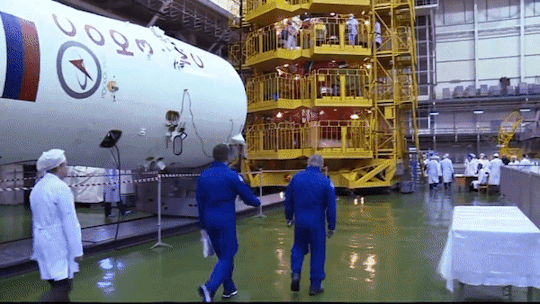
Student Launch Initiative
We’ve announced the preliminary winner of the 2017 Student Launch Initiative that took place near our Marshall Space Fight Center, The final selection will be announced in May. The students showcased advanced aerospace and engineering skills by launching their respective model rockets to an altitude of one mile, deploying an automated parachute and safely landing them for re-use.
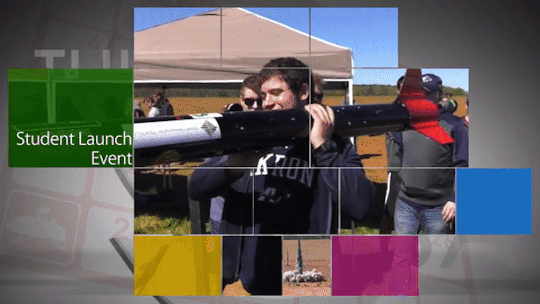
Langley’s New Lab
On April 11, a ground-breaking ceremony took place at our Langley Research Center for the new Systems Measurement Laboratory. The 175,000 square-foot facility will be a world class lab for the research and development of new measurement concepts, technologies and systems that will enable the to meet its missions in space explorations, science and aeronautics.

Yuri’s Night
Space fans celebrated Yuri’s Night on April 12 at the Air and Space Museum and around the world. On April 12, 1961, cosmonaut Yuri Gagrin became the first person to orbit the Earth.
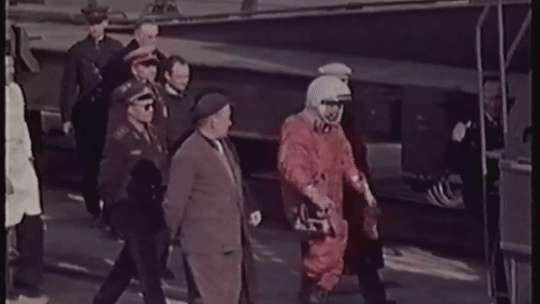
Celebrating the First Space Shuttle Launch
On April 12, 1981, John Young and Bob Crippin launched aboard Space Shuttle Columbia on STS-1 a two-day mission, the first of the Shuttle Program’s 30-year history.
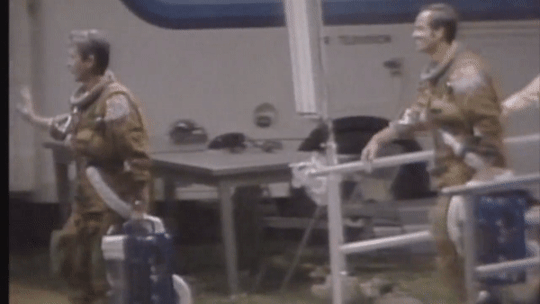
Watch the full episode:
youtube
Make sure to follow us on Tumblr for your regular dose of space: http://nasa.tumblr.com
794 notes
·
View notes
Photo

Now, as the Shuttle crossed the continental United States on a track that took her from south of Portland, Oregon, across the Midwest and southern shores of the Great Lakes toward Philadelphia, KENNEN number 5502 was passing directly overhead Thule toward Newfoundland. At their consoles, beneath the NRO bird’s orbit, the Thule operators - call sign POGO - tracked it’s progress, their data relayed back to the Blue Cube in Sunnyvale via the Defense Satellite Communication System network.
In the exchanges between Mission Control and the Shuttle, there was no suggestion that anything significant was happening. In fact, there seemed to be a studied indifference to it.
As OV-102 Columbia entered orbit, some of the fragile tiles had shaken loose off the OMS pods. In the picture above, you can see the red breaking up the white of the pods, this is the adhesive meant to secure the tiles to the air-frame. There was some worry as to whether these missing OMS tiles would affect the re-entry characteristics of the shuttle. It was eventually considered safe, assuming that area does not reach an unlikely two-thousand degrees in temperature.
The worry now was if any of the critical black tiles on the belly were missing, as there was no way to view the tiles from the cockpit. Powerful ground-based satellites could only take blurry photos, and that was only with clear skies.

Enter KEYHOLE , a classified spy satellite program under the Air Force and Department of Defense. As Columbia raced along with Bob Crippen and John Young aboard, it was determined that KH-11 KENNEN, a spy satellite similar in shape to the Hubble Space Telescope and in a Polar orbit, could intercept the shuttle and potentially provide high resolution photos to Mission Control in Houston to confirm whether or not a loss of tiles on Columbia’s belly.
Excerpt from Into the Black: The Extraordinary Untold Story of the First Flight of the Space Shuttle Columbia and the Astronauts Who Flew Here by Rowland White. I would not normally do a book recommendation on this blog, short of just using a book as source material, but I highly recommend this one for those interested in the very early development of the Shuttle, how the Air Force and DoD shaped the program, and how the first flight of the Shuttle Program unfolded.
6 notes
·
View notes
Photo




April 12th 1961: Yuri Gagarin becomes the first man in space
On this day in 1961, the Russian cosmonaut Yuri Gagarin became the first human to travel into outer space. Gagarin, a fighter pilot, was the successful candidate for the mission, being selected by Russian space programme director Sergei Korolev. Russia already had a lead in the Space Race, having launched Sputnik 1 in 1957, which was the first satellite in space. On April 12th 1961, Gagarin left Earth aboard the Vostok 1 spacecraft, famously declaring ‘Poyekhali!’ (which means ‘Let’s go!’ in Russian). He spent 108 minutes completing an orbit of the planet. Upon re-entering the atmosphere, Gagarin executed a successful ejection and landed by parachute in rural Russia, to the consternation of locals. Yuri Gagarin became famous worldwide and a Russian hero, being awarded the nation’s highest honour - Hero of the Soviet Union. Gagarin died in 1968 when the training plane he was piloting crashed; his ashes were buried in the walls of the Kremlin.
“Don’t be afraid, I am a Soviet citizen like you, who has descended from space and I must find a telephone to call Moscow!” - Gagarin to some stunned farmers when he landed
4K notes
·
View notes
Video
youtube
The age of human spaceflight began 56 years ago when Yuri Gagarin launched into space aboard Vostok 1. The 27-year-old Gagarin’s flight lasted 108 minutes during which he completed one revolution of the Earth. Upon his return to Earth, Gagarin toured the world as a beloved Hero of the Soviet Union and praised the world over for his historic accomplishment. Roughly every six weeks or so the ground track of the International Space Station matches up with that of Vostok 1′s at the same time of day that the historic mission flew. This allows astronauts on board the ISS to see the world almost exactly as Gagarin saw it.
In 2011, ESA astronaut Paolo Nespoli filmed the Earth during one of these orbits as part of a film called First Orbit, created by filmmaker Christopher Riley. Audio of Gagarin’s flight and his conversations with ground control are included in real time to simulate the cosmonaut’s historic journey.

163 notes
·
View notes
Photo
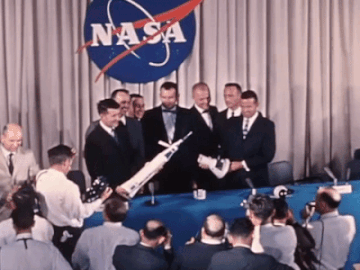




On April 9, 1959, the Mercury Seven were introduced to the world (and each other) for the first time. Scott Carpenter, Gordo Cooper, John Glenn, Gus Grissom, Wally Schirra, Alan Shepard, and Deke Slayton were announced as NASA’s original astronauts, “selected to begin training for orbital space flight.”
“I’ve never seen anything like it, before or since. It was just a frenzy of light bulbs and questions. It was some kind of roar. I know I stumbled through a couple of answers.
What was the real surprise was watching John Glenn. Someone asked if our wives were behind us. Six of us said, ‘Sure,’ as if that had ever been a real consideration. Glenn piped up with a damn speech about God and family and destiny. We all looked at him, and then each other.”
–Deke Slayton on their first press conference
270 notes
·
View notes
Photo



Blue Origin recently revealed the interior of their New Shepard crew capsule which the company hopes to fly next year. New Shepard will carry up to six people on an 11-minute suborbital flight high above Texas. A computer tablet mounted on the corner of each massive four-foot wide window will provide external and internal camera views, map views, and mission data to each flyer. Each flight will experience around four minutes of weightlessness. The capsule’s interior is sparse, maximising the available space for microgravity acrobatics.
The entire flight will be monitored by Launch Control on the ground, and there will not be any bulky control equipment. A black table-like structure in the capsule’s center is actually the Launch Escape Motor required in the event of a launch abort. P/C: Blue Origin
150 notes
·
View notes
Photo










Cassini prepares for final orbital “Grand Finale” at Saturn.
Erik Wernquist, the same filmmaker who created 2014’s “Wanderers” and a stunning New Horizons promotional film in 2015, has created a new video highlighting NASA’s Cassini mission’s final days at Saturn. The Cassini spacecraft will begin its final series of orbits to cap a 13-year groundbreaking science mission known as the Grand Finale. For the first time ever in Cassini’s time at Saturn, the spacecraft will fly in between the planet’s rings and atmosphere. No spacecraft has ever before flown in this region of any of the solar system’s ringed planets. After 23 orbits, Cassini will dive into Saturn’s upper atmosphere September 15 where it will be destroyed. In 2008, mission managers explored a range of End of Mission scenarios that would protect Saturn’s moon’s from Earthly contaminants before ultimately deciding on atmospheric reentry. Cassini began her End of Mission manoeuvres on November 26, 2016, when it began the first of 20 ring-grazing orbits. A close flyby of Titan April 22 will alter the spacecraft’s trajectory to begin the first of 23 orbits in the Grand Finale, which will begin April 26.

Cassini launched from Earth on October 15, 1997, and entered Saturn orbit June 30, 2004. Six months later, on January 14, 2005, the European-built Huygens probe attached to the spacecraft landed on Titan, becoming the first probe to land in the outer solar system. Originally scheduled for a four-year mission ending in 2008, Cassini received two mission extensions in 2008 and 2010, with the latter ending in 2017. With the spacecraft’s fuel reserves low, the Cassini team decided to end the mission. P/C: JPL/Erik Wernquist
4K notes
·
View notes
Photo
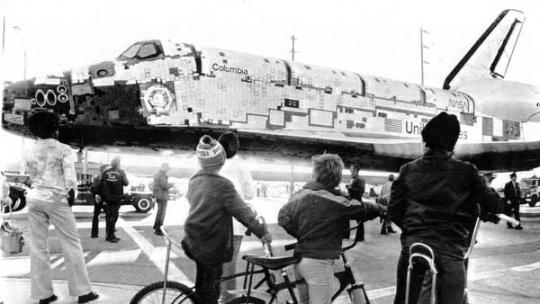
1979 - OV-102 Columbia rolls through Lancaster, California on her way to Edwards Air Force Base. From there, she would be delivered by the Shuttle Carrier Aircraft for final assembly and processing at Kennedy Space Center in Florida.
The fragility of the tiles would ensure a delay of two years from her delivery to KSC to STS-1 in 1981.
(UPI/Bob Flora, Bob Flora)
22 notes
·
View notes
Photo



Of Course I Still Love You returned to Port Canaveral earlier this morning with the SES-10 Falcon 9 first stage. Since this is the first Falcon 9 rocket to be reflown this marks the second time this particular rocket returned to port after landing. The images above were captured by remote cameras on the droneship and show the vehicle coming into land. Falcon 9 landed eight minutes after a March 30 liftoff from LC-39A at Kennedy Space Center. Extensive scorching is visible on the exterior of the rocket including the interstage and grid fins. The fins themselves were seen glowing during launch footage as the booster returned to Earth. Each fin is coated in ablative paint which helps protect the metal but the severe temperatures of reentry still cause the fins to glow. Since SES-10 was placed into Geostationary Transfer Orbit, not enough propellant remained in the first stage’s tanks to allow for a nominal reentry profile and the boostback burn was not performed. As such, the rocket came in over twice its normal landing speed and eight times hotter than flights which have a boostback burn. This particular rocket will not be reused after recovery; Elon Musk stated in the SES-10 post-launch news conference that the rocket will likely be given to the Air Force for display at either Cape Canaveral or Kennedy Space Center. P/C: SpaceX
357 notes
·
View notes
Text
New Horizons Reaches Halfway Point Between Pluto and Next KBO Target
New Horizons Reaches Halfway Point Between Pluto and Next KBO Target
New Horizons is now halfway from Pluto to its next destination – the KBO known as 2014 MU69, which it will reach on Jan. 1, 2019 (artist’s conception). Image Credit: NASA/JHUAPL/SwRI It may not seem like it, but it is approaching two years now since New Horizons made its historic flyby of Pluto and its moons in July 2015. But even though it has been quiet since then, the mission continues, as the…
View On WordPress
3 notes
·
View notes
Video
instagram
SES-10 landing footage Now that the droneship has returned to Port Canaveral, footage from cameras on board Of Course I Still Love You has been retrieved. These incredible views show the SES-10 booster landing on the droneship eight minutes after launching from Kennedy Space Center. The booster can be seen landing just a few feet from the center of the “X” on the ship and then bouncing briefly on its four legs before coming to rest. Falcon 9 will be retired from service after this mission, which was the first reuse of an orbital rocket in history. Elon Musk stated that the booster would be donated to Cape Canaveral for display. P/C: SpaceX.
191 notes
·
View notes
Text
Solar System: Things to Know This Week
Like sailors of old, the Cassini mission team fondly thinks of the spacecraft as “she." On April 22, she begins her Grand Finale, a spectacular end game—22 daring dives between the planet’s atmosphere and innermost rings. Here are 10 things to know about her Grand Finale.

1. She’s Broadcasting Live This Week
On Tuesday, April 4 at 3 p.m. EDT (noon PDT), At Jet Propulsion Laboratory, the Cassini team host a news briefing to discuss the mission’s Grand Finale.
Tune in Tuesday: youtube.com/nasajpl/live
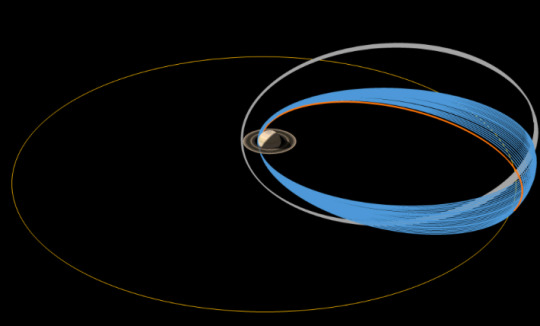
2. She’s Powered in Part By … Titan
Cassini left Earth with less than 1/30th of the propellant needed to power all her adventures at Saturn. The navigation team used the gravity of Saturn’s giant moon Titan to change course and extend the spacecraft’s exploration of Saturn. Titan also provides the gravity assist to push Cassini into its final orbits.
More on Cassini’s navigation: saturn.jpl.nasa.gov/mission/spacecraft/navigation/

3. She’s a Robot
Cassini is an orbiter that was named for 18th century astronomer Giovanni Domenico Cassini. She was designed to be captured by Saturn’s gravity and then explore it in detail with a suite of 12 powerful science instruments.
More on the Spacecraft: saturn.jpl.nasa.gov/mission/spacecraft/cassini-orbiter/
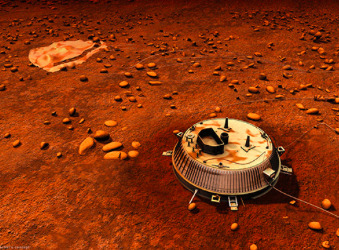
4. She Brought a Friend to Saturn
Cassini carried the European Space Agency’s Huygens Probe, which in 2005 descended through Titan’s thick, perpetual clouds and made the most distant landing to date in our solar system.
More on Huygens: saturn.jpl.nasa.gov/mission/spacecraft/huygens-probe/
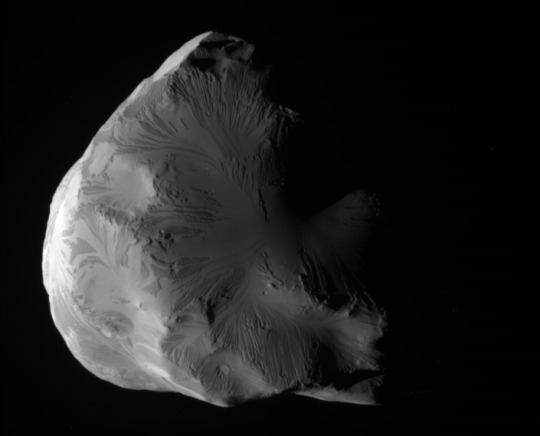
5. She’s a Great Photographer
Your mobile phone likely captures dozens of megapixels in images. Cassini, using 1990s technology closer to one megapixel cameras, has returned some of the most stunning images in the history of solar system exploration.
Cassini Hall of Fame Images: go.nasa.gov/2oec6H2 More on Cassini’s Cameras: saturn.jpl.nasa.gov/imaging-science-subsystem/
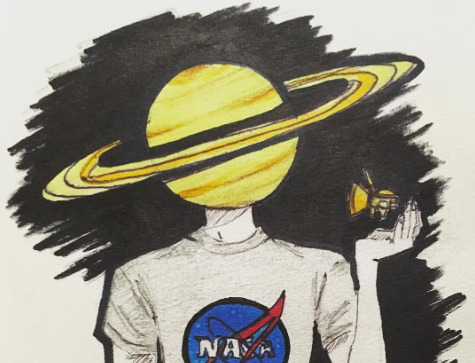
6. She’s an Inspiration
Those great images have inspired artist’s and amateur image processors to create truly fantastic imagery inspired by the beauty of Saturn. Feeling inspired? There’s still time to share your Cassini-inspired art with us.
Cassini Inspires Campaign: saturn.jpl.nasa.gov/mission/cassiniinspires/
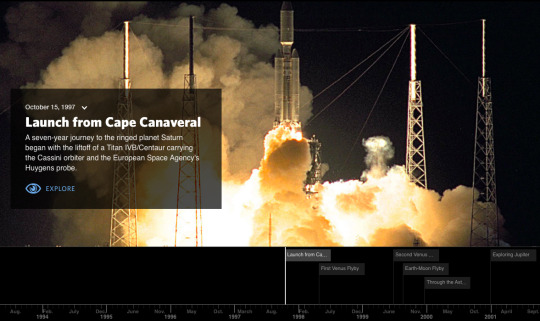
7. She’s Got a Long History
Two decades is a long time to live in the harsh environment of outer space (respect to the fast-approaching 40-year-old twin Voyager spacecraft). Launched in 1997, Cassini logged a lot of milestones over the years.
Explore the Cassini Timeline: saturn.jpl.nasa.gov/the-journey/timeline/

8. She Keeps a Diary
And, you can read it. Week after week going back to 1997, Cassini’s adventures, discoveries and status have been chronicled in the mission’s weekly significant events report.
Read It: https://saturn.jpl.nasa.gov/news/?topic=121

9. She’s Got a Fancy New App
Cassini was the prototype for NASA’s Eyes on the Solar System 3-D visualization software, so it’s fitting the latest Cassini module in the free, downloadable software is the most detailed, elaborate visualization of any mission to date.
Fly the Mission - Start to Finish: http://eyes.nasa.gov/cassini
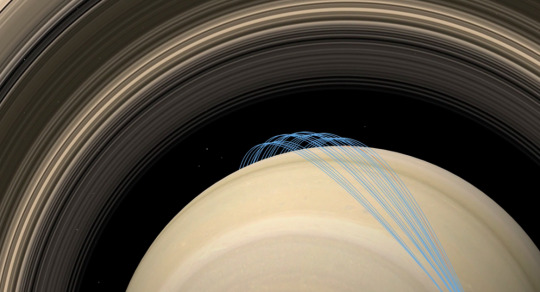
10. She’s Going Out in a Blaze of Glory
In addition to all the new information from 22 orbits in unexplored space, Cassini’s engineers reprogrammed the spacecraft to send back details about Saturn’s atmosphere to the very last second before the giant planet swallows her up on Sept. 15, 2017.
More on the Grand Finale: saturn.jpl.nasa.gov/grandfinale
Discover more lists of 10 things to know about our solar system HERE.
Make sure to follow us on Tumblr for your regular dose of space: http://nasa.tumblr.com
1K notes
·
View notes
Text
Celebrating 17 Years of NASA’s ‘Little Earth Satellite That Could’
youtube
The satellite was little— the size of a small refrigerator; it was only supposed to last one year and constructed and operated on a shoestring budget — yet it persisted.
After 17 years of operation, more than 1,500 research papers generated and 180,000 images captured, one of NASA’s pathfinder Earth satellites for testing new satellite technologies and concepts comes to an end on March 30, 2017. The Earth Observing-1 (EO-1) satellite will be powered off on that date but will not enter Earth’s atmosphere until 2056.
“The Earth Observing-1 satellite is like The Little Engine That Could,” said Betsy Middleton, project scientist for the satellite at NASA’s Goddard Space Flight Center in Greenbelt, Maryland.
To celebrate the mission, we’re highlighting some of EO-1’s notable contributions to scientific research, spaceflight advancements and society.
Scientists Learn More About Earth in Fine Detail
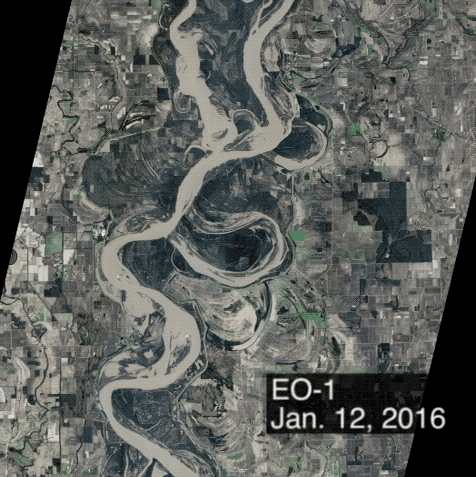
This animation shifts between an image showing flooding that occurred at the Arkansas and Mississippi rivers on January 12, 2016, captured by ALI and the rivers at normal levels on February 14, 2015 taken by the Operational Land Imager on Landsat 8. Credit: NASA’s Earth Observatory
EO-1 carried the Advanced Land Imager that improved observations of forest cover, crops, coastal waters and small particles in the air known as aerosols. These improvements allowed researchers to identify smaller features on a local scale such as floods and landslides, which were especially useful for disaster support.
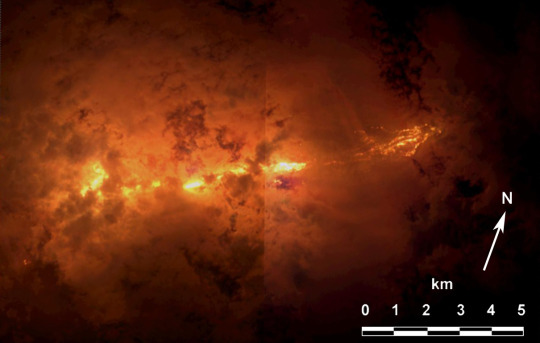
On the night of Sept. 6, 2014, EO-1’s Hyperion observed the ongoing eruption at Holuhraun, Iceland as shown in the above image. Partially covered by clouds, this scene shows the extent of the lava flows that had been erupting.
EO-1’s other key instrument Hyperion provided an even greater level of detail in measuring the chemical constituents of Earth’s surface— akin to going from a black and white television of the 1940s to the high-definition color televisions of today. Hyperion’s level of sophistication doesn’t just show that plants are present, but can actually differentiate between corn, sorghum and many other species and ecosystems. Scientists and forest managers used these data, for instance, to explore remote terrain or to take stock of smoke and other chemical constituents during volcanic eruptions, and how they change through time.
Crowdsourced Satellite Images of Disasters

EO-1 was one of the first satellites to capture the scene after the World Trade Center attacks (pictured above) and the flooding in New Orleans after Hurricane Katrina. EO-1 also observed the toxic sludge in western Hungary in October 2010 and a large methane leak in southern California in October 2015. All of these scenes, which EO-1 provided quick, high-quality satellite imagery of the event, were covered in major news outlets. All of these scenes were also captured because of user requests. EO-1 had the capability of being user-driven, meaning the public could submit a request to the team for where they wanted the satellite to gather data along its fixed orbits.
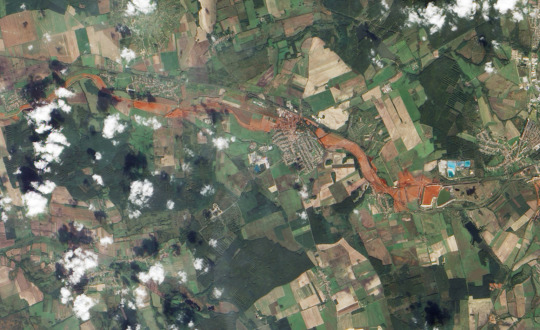
This image shows toxic sludge (red-orange streak) running west from an aluminum oxide plant in western Hungary after a wall broke allowing the sludge to spill from the factory on October 4, 2010. This image was taken by EO-1’s Advanced Land Imager on October 9, 2010. Credit: NASA’s Earth Observatory
Artificial Intelligence Enables More Efficient Satellite Collaboration

This image of volcanic activity on Antarctica’s Mount Erebus on May 7, 2004 was taken by EO-1’s Advanced Land Imager after sensing thermal emissions from the volcano. The satellite gave itself new orders to take another image several hours later. Credit: Earth Observatory
EO-1 was among the first satellites to be programmed with a form of artificial intelligence software, allowing the satellite to make decisions based on the data it collects. For instance, if a scientist commanded EO-1 to take a picture of an erupting volcano, the software could decide to automatically take a follow-up image the next time it passed overhead. The Autonomous Sciencecraft Experiment software was developed by NASA’s Jet Propulsion Laboratory in Pasadena, California, and was uploaded to EO-1 three years after it launched.

This image of Nassau Bahamas was taken by EO-1’s Advanced Land Imager on Oct 8, 2016, shortly after Hurricane Matthew hit. European, Japanese, Canadian, and Italian Space Agency members of the international coalition Committee on Earth Observation Satellites used their respective satellites to take images over the Caribbean islands and the U.S. Southeast coastline during Hurricane Matthew. Images were used to make flood maps in response to requests from disaster management agencies in Haiti, Dominican Republic, St. Martin, Bahamas, and the U.S. Federal Emergency Management Agency.
The artificial intelligence software also allows a group of satellites and ground sensors to communicate and coordinate with one another with no manual prompting. Called a “sensor web”, if a satellite viewed an interesting scene, it could alert other satellites on the network to collect data during their passes over the same area. Together, they more quickly observe and downlink data from the scene than waiting for human orders. NASA’s SensorWeb software reduces the wait time for data from weeks to days or hours, which is especially helpful for emergency responders.
Laying the Foundation for ‘Formation Flying’

This animation shows the Rodeo-Chediski fire on July 7, 2002, that were taken one minute apart by Landsat 7 (burned areas in red) and EO-1 (burned areas in purple). This precision formation flying allowed EO-1 to directly compare the data and performance from its land imager and the Landsat 7 ETM+. EO-1’s most important technology goal was to test ALI for future Landsat satellites, which was accomplished on Landsat 8. Credit: NASA’s Goddard Space Flight Center
EO-1 was a pioneer in precision “formation flying” that kept it orbiting Earth exactly one minute behind the Landsat 7 satellite, already in orbit. Before EO-1, no satellite had flown that close to another satellite in the same orbit. EO-1 used formation flying to do a side-by-side comparison of its onboard ALI with Landsat 7’s operational imager to compare the products from the two imagers. Today, many satellites that measure different characteristics of Earth, including the five satellites in NASA’s A Train, are positioned within seconds to minutes of one another to make observations on the surface near-simultaneously.
For more information on EO-1’s major accomplishments, visit: https://www.nasa.gov/feature/goddard/2017/celebrating-17-years-of-nasa-s-little-earth-satellite-that-could
Make sure to follow us on Tumblr for your regular dose of space: http://nasa.tumblr.com/.
1K notes
·
View notes
Photo

T-20 minutes to the historic launch of a flight-proven Falcon 9 rocket with SES-10.
SpaceX’s webcast of tonight’s historic SES-10 launch has begun and liftoff is only 20 minutes away. This will be the first time SpaceX will reuse one of their Falcon 9 rockets, a goal the company has been working towards since 2011.
Watch LIVE here or below.
youtube
P/C:SpaceX
99 notes
·
View notes
Photo
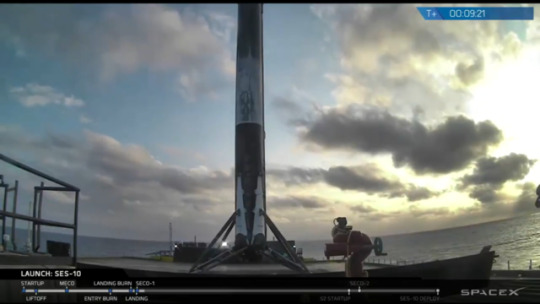
“We have altered the future of Spaceflight” - first reuse of an orbital-class rocket.
SpaceX successfully reflew one of their Falcon 9 rockets Thursday night on the SES-10 mission, marking the first time in history an orbital-class rocket has been used for more than one mission.
SES-10 launched at the beginning of a two hour launch window at 6:27pm EDT. Around eight minutes later, the rocket’s first stage landed on Of Course I Still Love You downrange in the Atlantic Ocean.
P/C: SpaceX.
616 notes
·
View notes
